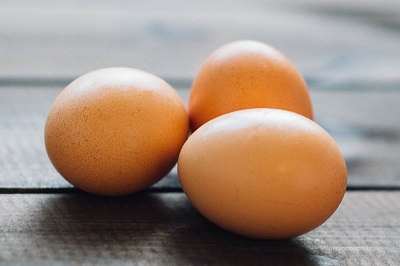The Eggshell Color is the result of pigments being deposited during egg formation within the oviduct. All eggs are initially white, and shell colour is the result of the pigments called porphyrins being deposited while the eggs are in the process of formation. Interestingly, the colour goes right through the shell, making the eggs difficult to candle during incubation.
All eggs start out white in color; those that are laid in shades other than white have pigments deposited on them as the eggs travel through the hen’s oviduct. The journey through the chicken’s oviduct takes approximately 26 hours. The shell takes roughly 20 hour to be complete. Ameraucana birds have the pigment oocyanin deposited on the egg as it travels through the oviduct. This pigment permeates the egg shell resulting in the interior and exterior of the egg being the same blue color. Chickens that lay brown tinted eggs deposit the pigment protoporphyrin on the eggs late in the process of forming the shell. The pigment therefore does not penetrate the interior of the egg, but tints only the surface of the egg, which is why brown eggs are white on the interior. In the case of an Olive Egger, a brown pigment overlays a blue egg shell resulting in a green egg. The darker the brown pigment the more olive color of the resulting egg.
Research in Australia has shown that providing water at a temperature of 5OC in very hot weather enabled hens to produce eggs that maintained their dark shell colour. The shells also had a better weight and shell breaking strength. (Ref: Shell Quality and Cooling Drinking Water. Tangkere, Bhandra & Dingle. University of Queensland. 2001).

There are also other reasons why shell colour becomes paler. Stress, for example, can affect the colour intensity. A sudden disturbance to the normal routine may result in a hen retaining the egg within the shell gland area of the oviduct for a longer than normal period.
The color of an egg is not an indicator of quality. When it comes to taste and nutrition, there is no difference between white and brown eggs. Despite the fact that they’re often more expensive, brown eggs aren’t any better for you than white eggs, and vice versa.

There’s a perception that because brown eggs are more expensive, they must be more “natural” or healthier. That’s not necessarily true. Brown eggs tend to have a higher price tag simply because the reddish-feathered chickens that lay brown eggs are larger than the breed that lays white eggs, and as such, they require more feed. That extra cost is offset by — you guessed it — a higher price at the grocery store.

